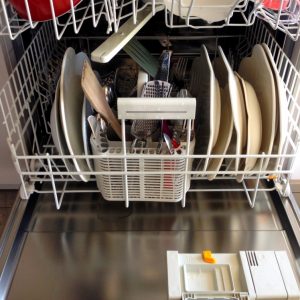Five ways to reduce energy consumption
10 August 2022

As energy costs spiral, reducing domestic energy consumption has become a top priority
The early 1970s have become synonymous with power cuts, as industrial action saw us bathing by candlelight and relying on coal fires for warmth. Despite the interminable war in Ukraine, we’re not facing a return to mass power cuts here in 2022, yet a combination of the war and rising inflation will cause energy prices to soar further in the coming months, eating into an ever-greater share of disposable household incomes.
In such circumstances, it’s vital to minimise energy consumption around the home. This is often easier to achieve than we assume, involving a combination of common sense and modest initial outlays which can achieve significant long-term savings. These are our five tips for reducing energy costs at home:
- Unplug appliances, instead of leaving them on standby.
Fridge freezers and broadband routers need constant power, but we tend to leave other devices on standby even when they don’t need to be. TV set top boxes and desktop computers consume substantial amounts of internet bandwidth even when not in use, increasing their electrical consumption. Switching them off at the wall could save £55 per year, according to the Energy Saving Trust.
- Invest in low-energy lighting for mood lighting.
Your Juniper home includes low energy light fittings as standard, but it’s well worth considering for mood lighting too. A low-energy lightbulb takes longer to warm up than a conventional filament bulb, and it’s more expensive to purchase. However, it will consume less than a quarter of the electricity a standard bulb requires, while lasting up to 25 times longer. Higher wattage bulbs might mean you don’t need a second lamp on, while full spectrum lighting is great for alleviating seasonal affective disorder (caused by the lack of sunshine during autumn and winter).
- Keep windows closed overnight.
The modern double-glazed windows installed in Juniper Residential homes are highly energy efficient, and they’ll trap warm air far more effectively than older casements. Closing windows (and trickle vents in rooms which aren’t in constant use) prevents warm air escaping and colder air entering, which will then have to be heated. Check weather reports and open windows when the air outside is at its warmest.
- Make appliances work more efficiently.
This is all about maximising available resources. Don’t put the dishwasher on until it’s fully loaded, and only use the longest programme to degrease baked-on pans and oven trays. Fill the washing machine with whites and coloureds and add a colour catcher, instead of doing separate washes. Only use a tumble dryer when it’s impractical to dry clothes outside or beside radiators, and never boil the kettle with more water than is actually needed.
- Adjust radiator thermostats.
It’s common practice to leave the thermostat dials at the sides of individual gas or electric radiators at their highest setting. When central heating comes on, every radiator will try to reach peak temperature. This is often a false economy, especially in little-used rooms like en-suites or guest bedrooms. Turning the thermostat down in selected rooms helps you prioritise energy usage elsewhere, while keeping some warmth in these secondary apartments.
